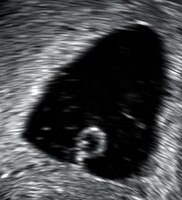
Photo from wikipedia
Background Inasmuch as induced abortions, miscarriages and stillbirths constitute common adverse pregnancy outcomes contributing to poor maternal health, there is paucity of literature about these in Ghana. We investigated the… Click to show full abstract
Background Inasmuch as induced abortions, miscarriages and stillbirths constitute common adverse pregnancy outcomes contributing to poor maternal health, there is paucity of literature about these in Ghana. We investigated the factors associated with induced abortions, miscarriages and stillbirths in Ghana. Methods Data derived from the 2017 Ghana Maternal Health Survey was used in this study. Women aged 15–49 constituted the target for the study. This study examined the relationship between socio-demographic characteristics and induced abortions, stillbirths and miscarriages. Subsequently, multivariable binary logistic regression models were fitted to investigate the factors associated with induced abortions, stillbirths and miscarriages at 95 % confidence interval (CI). Results The prevalence of miscarriages, induced abortions and stillbirths in Ghana in 2017 were 10.8 %, 10.4 % and 2 % respectively. Induced abortions (12.9 %) and miscarriages (11.1 %) were found to be higher among urban residents whiles rural residents had more of stillbirths (2.1 %). Compared to women aged 15–24, those in all age categories had lower odds of experiencing induced abortions, with the lowest odds occurring among women aged 35–49 (AOR = 0.26, 95 % CI = 0.21-32). Conversely, women of all age categories had higher odds of experiencing miscarriages compared to those aged 15–24 with the highest odds among those aged 25–34 (AOR = 1.62, 95 % CI = 1.39–1.89). Women with at least primary education were more likely to experience miscarriages than those with no formal education, with those with higher level of education having the highest odds (AOR = 1.42, 95 % CI = 1.13–1.78). While the likelihood of induced abortions was lower among Muslims, compared to Christians (AOR = 0.65, 95 % CI = 0.52–0.82), the odds of miscarriages were higher among Muslims, compared to Christians (AOR = 1.31, 95 % CI = 1.13–1.52). Women with parity 1 or more were less likely to experience induced abortions, miscarriages and stillbirths compared to those with parity 0. Conclusions Our study indicates that efforts to limit induced abortions, miscarriages and stillbirths in Ghana need to focus on the disparities in socio-demographic characteristics of women. Synergy between government health institutions and the private sector cannot be left out if much success can be achieved in efforts to subside the current prevalence of induced abortions, stillbirths and miscarriages confronting the country.
Journal Title: BMC Pregnancy and Childbirth
Year Published: 2021
Link to full text (if available)
Share on Social Media: Sign Up to like & get
recommendations!